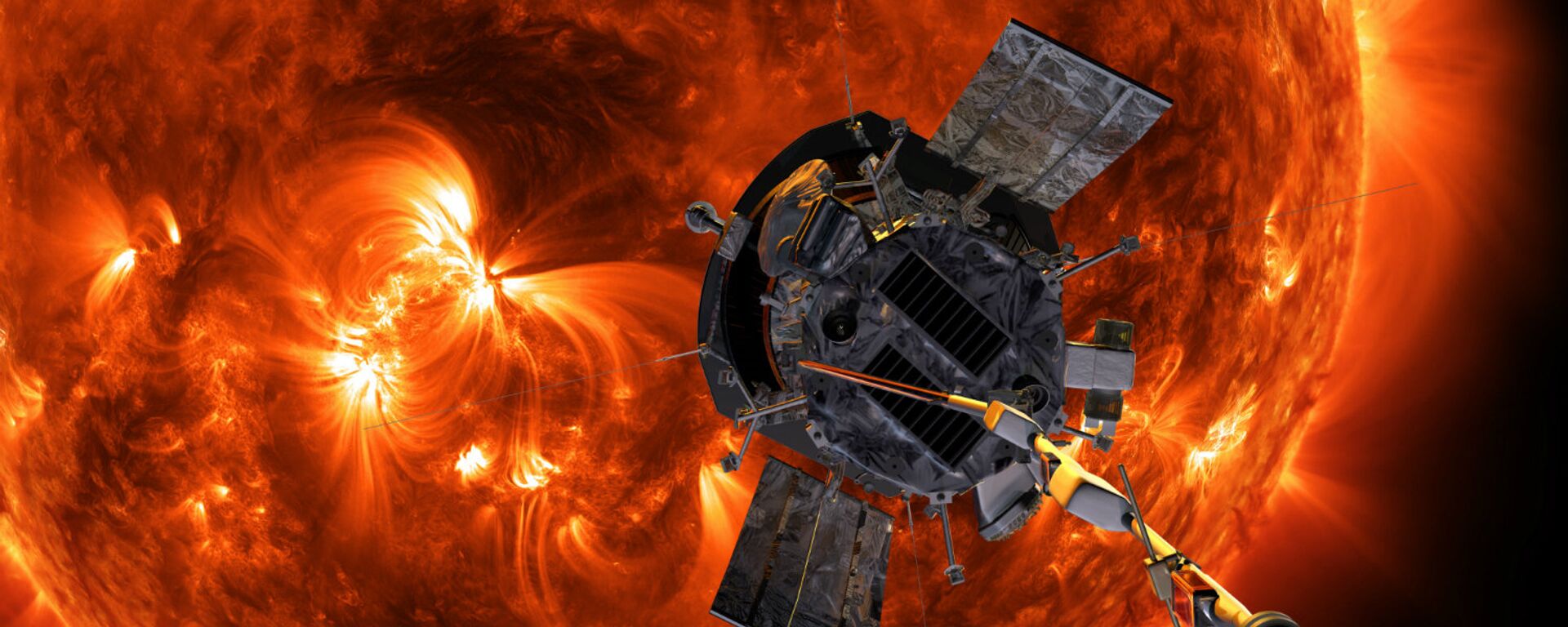https://sputnikglobe.com/20211016/jupiter-like-planet-orbiting-dead-star-offers-glimpse-into-future-of-our-solar-system-1089961775.html
Jupiter-Like Planet Orbiting Dead Star Offers Glimpse Into Future of Our Solar System
Jupiter-Like Planet Orbiting Dead Star Offers Glimpse Into Future of Our Solar System
Sputnik International
The first discovery of a planet orbiting a dead star, a celestial grouping said to resemble our own Solar System, offers clues that our planet could survive... 16.10.2021, Sputnik International
2021-10-16T01:49+0000
2021-10-16T01:49+0000
2021-10-16T01:47+0000
solar system
jupiter
sun
white dwarf
https://cdn1.img.sputnikglobe.com/img/107836/81/1078368192_0:192:2048:1344_1920x0_80_0_0_5c8497b01547f76814dc80a1cb012820.jpg
The newfound planet — that has a similar orbit to our Solar System's largest gas giant, Jupiter - revolves around a dead star, or white dwarf, and was accidentally discovered during gravitational microlensing event in 2010.The team reportedly found that the random extrasolar planet is almost 40 times larger than Jupiter, however, and noted that its parent star, orbiting near the center of the Milky Way, is some 60% of the sun's mass.Researchers detected the system using the W. M. Keck Observatory in Hawaii.“This evidence confirms that planets orbiting at a large enough distance can continue to exist after their star’s death,” says Joshua Blackman, an astronomy postdoctoral researcher at the University of Tasmania in Australia and lead author of the study.Earth's future "may not be so rosy", however, because of our home planet's proximity to the Sun, said co-author David Bennett, a senior research scientist at the University of Maryland and NASA's Goddard Space Flight Center.The research team aims to include its findings in a statistical study to find out how many other white dwarfs have planetary survivors.NASA’s upcoming mission, the Nancy Grace Roman Space Telescope (formerly known as WFIRST), is designed to settle essential questions in the areas of dark energy and will help further their investigation.The group’s findings were published in the latest issue of the journal Nature.
https://sputnikglobe.com/20200901/stellar-duo-suns-twin-possible-role-in-solar-system-history-tackled-in-new-study-1080341761.html
Sputnik International
feedback@sputniknews.com
+74956456601
MIA „Rossiya Segodnya“
2021
News
en_EN
Sputnik International
feedback@sputniknews.com
+74956456601
MIA „Rossiya Segodnya“
Sputnik International
feedback@sputniknews.com
+74956456601
MIA „Rossiya Segodnya“
solar system, jupiter, sun, white dwarf
solar system, jupiter, sun, white dwarf
Jupiter-Like Planet Orbiting Dead Star Offers Glimpse Into Future of Our Solar System
The first discovery of a planet orbiting a dead star, a celestial grouping said to resemble our own Solar System, offers clues that our planet could survive the Sun's violent death about five billion years from now.
The newfound planet — that has a similar orbit to our Solar System's largest gas giant, Jupiter - revolves around a dead star, or white dwarf, and was accidentally discovered during
gravitational microlensing event in 2010.
The team reportedly found that the random extrasolar planet is almost 40 times larger than Jupiter, however, and noted that its parent star, orbiting near the center of the Milky Way, is some 60% of the sun's mass. Researchers detected the system using the W. M. Keck Observatory in Hawaii.
“This evidence confirms that planets orbiting at a large enough distance can continue to exist after their star’s death,” says Joshua Blackman, an astronomy postdoctoral researcher at the University of Tasmania in Australia and lead author of the study.
“Given that this system is an analog to our own Solar System, it suggests that Jupiter and Saturn might survive the Sun’s red giant phase, when it runs out of nuclear fuel and self-destructs.”
Earth's future "may not be so rosy", however, because of our home planet's proximity to the Sun, said co-author David Bennett, a senior research scientist at the University of Maryland and NASA's Goddard Space Flight Center.

1 September 2020, 17:08 GMT
“If humankind wanted to move to a moon of Jupiter or Saturn before the Sun fried the Earth during its red supergiant phase, we’d still remain in orbit around the Sun, although we would not be able to rely on heat from the Sun as a white dwarf for very long.”
The research team aims to include its findings in a statistical study to find out how many other white dwarfs have planetary survivors.
NASA’s upcoming mission, the Nancy Grace Roman Space Telescope (formerly known as WFIRST), is designed to settle essential questions in the areas of dark energy and will help further their investigation.
The group’s findings were published in the latest issue of the
journal Nature.

